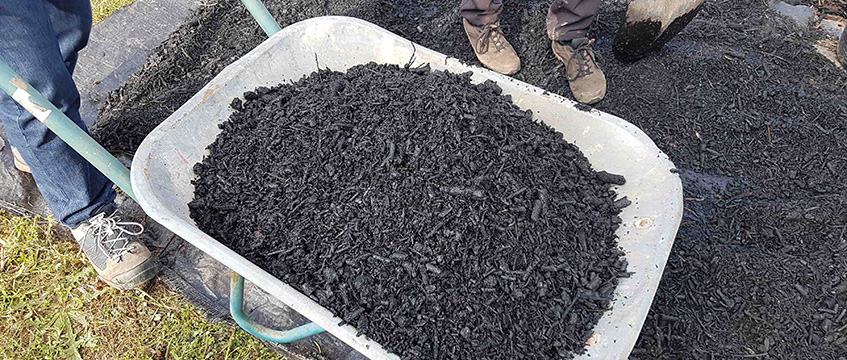A team of scientists, led by Mehreen Gul from Heriot-Watt University, are investigating the use of biochar as a new building material that could consume carbon and create a new frontier in sustainable development.
Biochar is a charcoal-like substance produced by heating organic biomass from food, paper, agricultural and forestry waste in the presence of little or no oxygen.
It has already shown promise as a sustainable building material that can improve insulation, air quality and moisture control while allowing buildings to act as ‘carbon sinks’ – taking up more carbon from the atmosphere than it releases.
According to the team at Herriot-Watt University, replacing as little as 1% of a fine aggregate with biochar in cement can improve compressive strength by around 10%.
Gul, assistant professor in architectural engineering at Heriot-Watt University, said: “Our research aims to provide an evidence base for adopting biochar within building projects to contribute significantly to carbon reductions, helping the government meet net zero emission targets and providing reassurance to industry and the wider public about its use.
“More research is now required to explore how buildings can ‘eat carbon’ – essentially soaking up more carbon from the atmosphere than they release, and we believe biochar could play a crucial role in developing this work.”
Gul said she and her interdisciplinary team of civil engineers, building physicists and social scientists from Heriot-Watt University, Aston University and the University of Birmingham, would now be testing the performance and properties of biochar in materials like concrete, brick and plaster, while also running building simulations to investigate potential energy savings and thermal efficiency.
“Crucially, we’ll be consulting with key industry players to understand the effectiveness, readiness, cost, social acceptability and any limitations of biochar as a building material,” she added. “Our 360-degree approach will consider a broad range of stakeholders with varying level of experiences, knowledge, and skill, incorporating feedback from each party regularly before commencing to the next step. This iterative approach will reveal blind spots and offer a more holistic understanding of issues, shaping the outcomes of experiments and building modelling.”
The team aims to develop a framework to help encourage the use of biochar in the UK building industry and beyond. It believe use of the material could help to transform the traditional sector by providing new pathways for sustainable construction practices and materials.
Send feedback to Samantha McClary
Follow Estates Gazette











